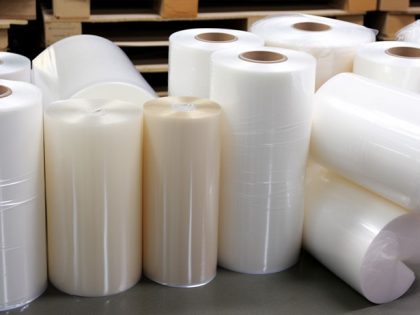- Your cart is empty
- Continue Shopping
The Science Behind Biodegradable Packaging: Benefits, Challenges, and Future Outlook
-
4scxi
- Posted on
- 0 comments

Introduction
As environmental concerns continue to grow, biodegradable packaging has emerged as a promising alternative to traditional plastics. Understanding the science behind these materials, their benefits, limitations, and future potential is crucial for businesses considering sustainable packaging solutions.
What Makes Packaging Biodegradable?
Biodegradable packaging materials are designed to break down naturally through biological processes. This occurs when microorganisms such as bacteria, fungi, and algae consume the material and convert it into water, carbon dioxide, and biomass.
Key Factors Affecting Biodegradation:
- Material composition and molecular structure
- Environmental conditions (temperature, humidity, oxygen levels)
- Presence of microorganisms
- pH levels
- Time duration
Types of Biodegradable Materials
Plant-Based Polymers
Starch-Based Materials:
- Derived from corn, potato, or wheat starch
- Excellent biodegradability in composting conditions
- Applications: Shopping bags, food packaging, disposable cutlery
PLA (Polylactic Acid):
- Made from fermented plant sugars
- Requires industrial composting facilities for proper degradation
- Applications: Food containers, bottles, films
Naturally Occurring Polymers
Cellulose-Based Materials:
- Derived from wood pulp or agricultural waste
- Naturally biodegradable and compostable
- Applications: Food wrapping, protective packaging
Benefits of Biodegradable Packaging
Environmental Advantages
- Reduced Landfill Waste: Materials break down naturally, reducing long-term waste accumulation
- Lower Carbon Footprint: Many biodegradable materials are derived from renewable resources
- Soil Enhancement: Properly composted materials can improve soil quality
- Marine Protection: Reduces plastic pollution in oceans and waterways
Business Benefits
- Brand Reputation: Demonstrates environmental responsibility
- Regulatory Compliance: Meets increasing environmental regulations
- Consumer Appeal: Attracts environmentally conscious customers
- Innovation Opportunities: Opens new market segments
Current Challenges
Technical Limitations
- Shelf Life: Some biodegradable materials have shorter storage life
- Barrier Properties: May not provide the same moisture or oxygen barriers as traditional plastics
- Temperature Sensitivity: Performance can be affected by extreme temperatures
- Mechanical Strength: May be less durable than conventional packaging
Economic Considerations
- Higher Initial Costs: Currently more expensive than traditional plastics
- Infrastructure Requirements: Need for industrial composting facilities
- Supply Chain Complexity: Limited supplier networks in some regions
Best Practices for Implementation
Proper Disposal and Composting
- Educate consumers on proper disposal methods
- Distinguish between home compostable and industrial compostable materials
- Provide clear labeling and instructions
Storage and Handling
- Control humidity and temperature during storage
- Use appropriate barrier films when necessary
- Consider packaging design modifications
Future Outlook
The biodegradable packaging industry is rapidly evolving with advances in:
- Material Science: Development of stronger, more versatile biodegradable polymers
- Cost Reduction: Economies of scale and improved production methods
- Infrastructure Development: Expansion of composting facilities
- Regulatory Support: Government incentives and plastic reduction policies
Making the Transition
For businesses considering biodegradable packaging:
- Conduct a packaging audit to identify suitable applications
- Test materials under actual storage and transportation conditions
- Educate stakeholders on proper handling and disposal
- Start with pilot programs before full implementation
- Monitor performance and gather feedback



